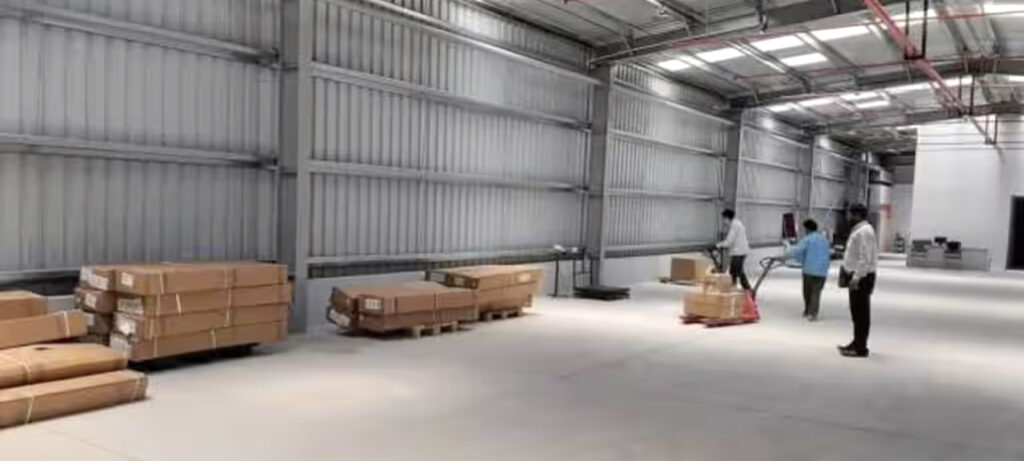Poor regulatory capacity of the Warehousing and Development Regulatory Authority impacts warehouse-based sales of agri commodities and issue of e-Negotiable Warehouse Recei pts.
Warehousing is a critical element of supply chain management, enabling the storage of commodities and smoothening of the supply-demand and price fluctuations. To improve scientific warehousing, enhance credit availability in rural areas, and smoothen the exchange functions, the Warehousing Development and Regulatory Authority (WDRA) was set up in India on October 26, 2010. The National Logistics Policy (NLP) also recognises warehousing as a critical element. To reduce logistics costs from ~14% to ~8%, NLP identifies adequate investment in improving efficiency, productivity, and quality services of warehouses as well as digitisation as key strategies.
However, the warehousing ecosystem has failed to meet the intended outcomes. The issuance of e-Negotiable Warehouse Receipts (NWR) and warehouse-based sales of agri-commodities, the primary objective of WDRA, have fallen short of the desired levels. The total lending against NWR/e-NWR as a proportion of institutional credit for agriculture is negligible and stagnant. While states like Rajasthan, Gujarat, and Maharashtra made noteworthy progress, many are yet to issue any e-NWR. Warehouse-based sales are almost non-existent in many states. A new research paper published by The Infravision Foundation (TIF) and IIM-B analyses these issues and recommends measures to improve them.
The warehousing ecosystem faces two primary challenges. The first is related to the warehouse registration. Estimates show that only 6.35% of the warehouses and 32.02% of the warehousing capacity are registered with WDRA. There is a general lack of awareness regarding the registration process. More importantly, data shows that WDRA registration per se doesn’t guarantee improved warehouse capacity utilisation. Contrarily, in major commercial centres (for example, Tumkur, Karnataka) warehouse capacity utilisation is high even without registration.
WDRA does not guarantee the security of quantity or quality of stored commodities, even in registered warehouses. Since warehousemen also do not assume custodianship of the goods stored, banks involve collateral managers to ensure the security of stock, adding to the cost burden. The paper estimates that warehousing registration increases costs by about 10%. Warehouse owners feel that this cost burden comes with no noticeable benefits.
The second challenge relates to the poor regulatory capacity of WDRA that ultimately impacts the warehouse-based sales and issuance of e-NWRs. WDRA aims to directly regulate about 1.2 lakh geographically spread-out warehouses with poor/incomplete data. WDRA is thus trying to regulate warehouses with no clear knowledge of what it is regulating.
Warehouse inspections is another, perhaps more critical aspect. WDRA’s inspections focus primarily on compliance with the specified registration requirements relating mostly to the physical infrastructure. Inspections to ascertain the quantity and quality of stock are not at desirable levels and don’t give confidence to the banks to lend against e-NWRs. Additionally, very few warehouses are connected to the exchange, limiting warehouse-based sales. Other challenges include a shortage of skilled workforce for handling the warehouse business operations.
These challenges must be overcome to give confidence to lenders. The TIF-IIMB research paper proposes a multi-pronged approach to enhance e-NWR-based lending and warehouse-based sales.
It recommends mandatory WDRA registration for warehouses but delinking the requirement of security deposit to bring all warehouses on one platform. The research paper then proposes periodic grading and ratings of warehouses based on size, infrastructure for maintaining the quality of the commodity and professional management. Rigorous stakeholder consultation can help identify appropriate parameters for rating warehouses including compliance with physical infrastructure as per WDRA guidelines, availability and adequacy of trained warehouse managers, adequate security measures, facilities to ensure the quality of commodities, office amenities, and access to infrastructure for assaying and testing.
The paper further recommends the creation of a cadre of ‘Chartered Warehouse Auditors’ to assess the quality of the warehouses. They will bring in professional management to enhance the credibility of the warehouses and improve lenders’ confidence.
A platform accessible through a portal/mobile app can make available information like ratings, space availability, location, and commodities stored for prospective users. The platform should enable seamless registration and online updating of transactions.
Only good-quality warehouses with better ratings should be allowed to issue e-NWRs. To incentivise upgradation and better ratings, financial incentives may be offered to improve warehouse infrastructure and technology adoption. To be able to issue e-NWRs, the warehouses must take custodianship of the stock, and ensure security of the quality and quantity of stock. Failure to do so must attract hefty fines and ratings downgrade. Registered warehouses issuing e-NWRs must enhance the frequency and quality of inspections.
Significant public investment is needed to upgrade the systems for quality inspection, assaying facilities, standardising quality, and establishing warehouses and commodity market linkages. Systematic research on dispute-causing issues (e.g., losses) and a better dispute resolution mechanism must be established.
WDRA must proactively create awareness about the professional management of warehouses and their regulation. The state governments must take responsibility for improving the ecosystem and promoting warehouse-based sales. Ultimately, commodity owners and lenders must see the value in warehousing.
| Research Paper |
| Presentation |
By Nitin Zamre
With technical inputs from Gopal Naik, professor, IIM-B, and Gopi Shankar, assistant professor, Azim Premji University, Bangalore
The author is COO of The Infravision Foundation


